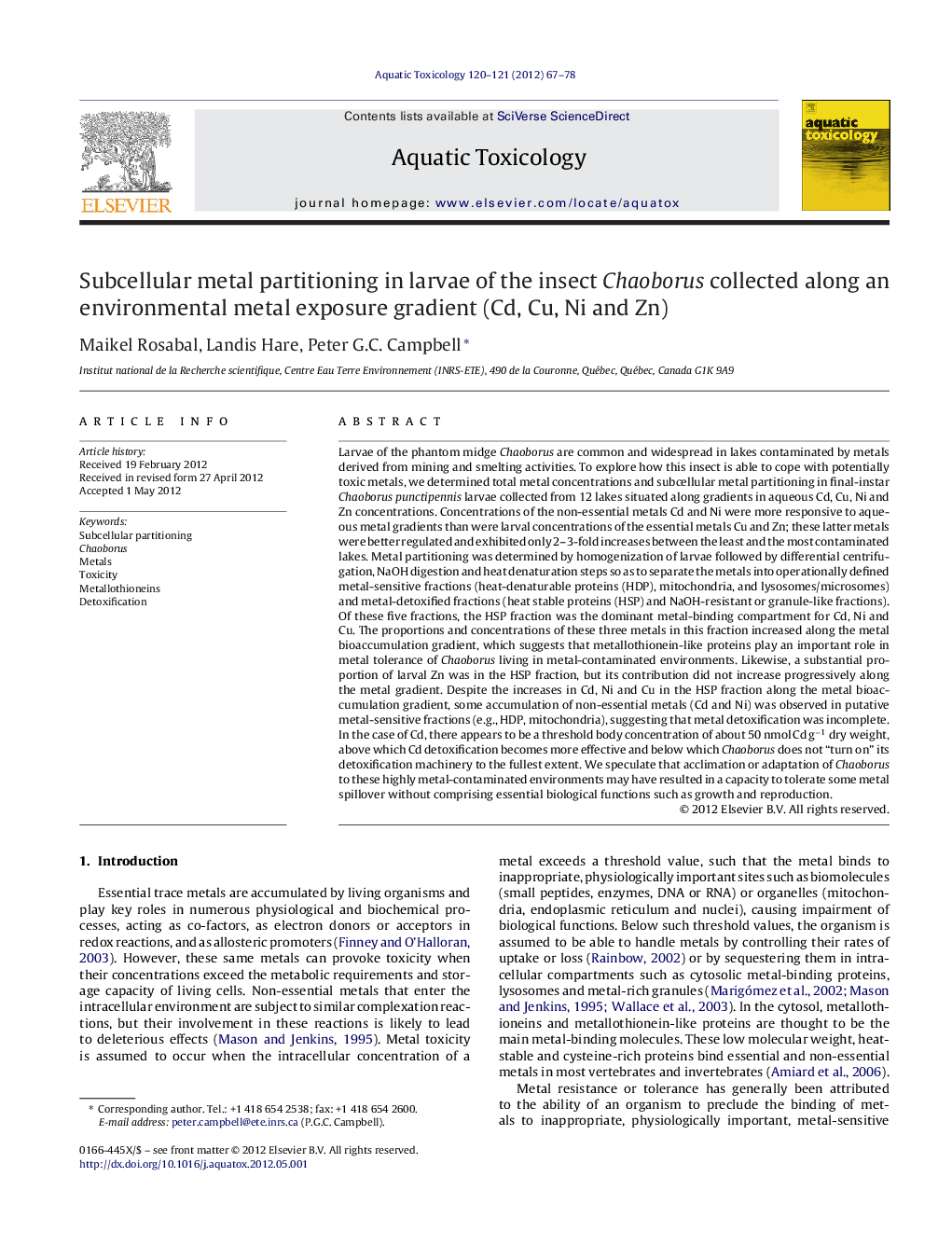| Article ID | Journal | Published Year | Pages | File Type |
|---|---|---|---|---|
| 4529571 | Aquatic Toxicology | 2012 | 12 Pages |
Larvae of the phantom midge Chaoborus are common and widespread in lakes contaminated by metals derived from mining and smelting activities. To explore how this insect is able to cope with potentially toxic metals, we determined total metal concentrations and subcellular metal partitioning in final-instar Chaoborus punctipennis larvae collected from 12 lakes situated along gradients in aqueous Cd, Cu, Ni and Zn concentrations. Concentrations of the non-essential metals Cd and Ni were more responsive to aqueous metal gradients than were larval concentrations of the essential metals Cu and Zn; these latter metals were better regulated and exhibited only 2–3-fold increases between the least and the most contaminated lakes. Metal partitioning was determined by homogenization of larvae followed by differential centrifugation, NaOH digestion and heat denaturation steps so as to separate the metals into operationally defined metal-sensitive fractions (heat-denaturable proteins (HDP), mitochondria, and lysosomes/microsomes) and metal-detoxified fractions (heat stable proteins (HSP) and NaOH-resistant or granule-like fractions). Of these five fractions, the HSP fraction was the dominant metal-binding compartment for Cd, Ni and Cu. The proportions and concentrations of these three metals in this fraction increased along the metal bioaccumulation gradient, which suggests that metallothionein-like proteins play an important role in metal tolerance of Chaoborus living in metal-contaminated environments. Likewise, a substantial proportion of larval Zn was in the HSP fraction, but its contribution did not increase progressively along the metal gradient. Despite the increases in Cd, Ni and Cu in the HSP fraction along the metal bioaccumulation gradient, some accumulation of non-essential metals (Cd and Ni) was observed in putative metal-sensitive fractions (e.g., HDP, mitochondria), suggesting that metal detoxification was incomplete. In the case of Cd, there appears to be a threshold body concentration of about 50 nmol Cd g−1 dry weight, above which Cd detoxification becomes more effective and below which Chaoborus does not “turn on” its detoxification machinery to the fullest extent. We speculate that acclimation or adaptation of Chaoborus to these highly metal-contaminated environments may have resulted in a capacity to tolerate some metal spillover without comprising essential biological functions such as growth and reproduction.
► Midge larvae were collected from 12 lakes representing Cd, Cu, Ni and Zn gradients. ► Along the gradients, the heat-stable protein fractions increased for Cd, Ni and Cu. ► However, this metal detoxification response was incomplete for Cd and Ni. ► Concentrations of these two metals increased in putative metal-sensitive fractions. ► Metal detoxification is Chaoborus is compared to that in other freshwater animals.
